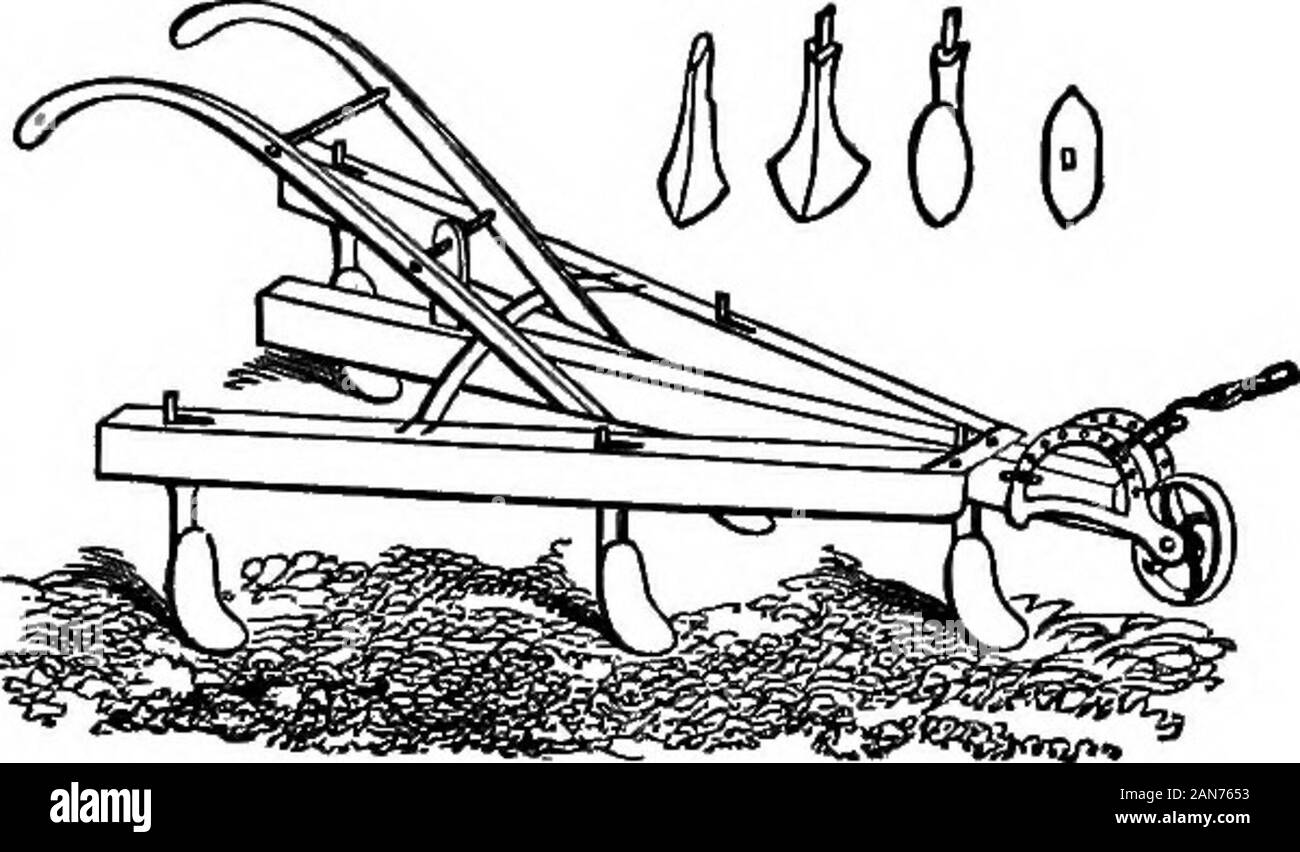Manual of agriculture, for the school, the farm, and the fireside . fter the plough, tobreak down and mellow or pulverizethe furrow slice. It should be movedrapidly over the soil. It has beenvery much improved within a fewyears. 458. The cultivator, (Pig. 22,) mayproperly be regarded as a modifiedform of the harrow, but it is muchbetter than the harrow,because with its ploughshaped teeth, it lightensup and mellows thesurface soil, instead ofpressing it down hard,as the harrow is apt todo every where e:^cepton new, rougli land. 459. The roller is often used to pulverize the surfacesoil. It has

Image details
Contributor:
The Reading Room / Alamy Stock PhotoImage ID:
2AN7653File size:
7.2 MB (294 KB Compressed download)Releases:
Model - no | Property - noDo I need a release?Dimensions:
2064 x 1211 px | 35 x 20.5 cm | 13.8 x 8.1 inches | 150dpiMore information:
This image is a public domain image, which means either that copyright has expired in the image or the copyright holder has waived their copyright. Alamy charges you a fee for access to the high resolution copy of the image.
This image could have imperfections as it’s either historical or reportage.
Manual of agriculture, for the school, the farm, and the fireside . fter the plough, tobreak down and mellow or pulverizethe furrow slice. It should be movedrapidly over the soil. It has beenvery much improved within a fewyears. 458. The cultivator, (Pig. 22, ) mayproperly be regarded as a modifiedform of the harrow, but it is muchbetter than the harrow, because with its ploughshaped teeth, it lightensup and mellows thesurface soil, instead ofpressing it down hard, as the harrow is apt todo every where e:^cepton new, rougli land. 459. The roller is often used to pulverize the surfacesoil. It has so large a surface to rest on the soil, that itcrushes and breaks up clods without hardening the lowerstrata. 460. In laying down lands to grass, it is often usefulin pressing down small stones, so as to get them out ofthe way of the scythe. It is often useful, also, on newlysown grain, and hastens the germination of seeds, bypreserving the moisture around them. 461. But clayey soils should nevex be rolled exceptwhen they are perfectly dry, and for the purpose of. Fig. 22. 146 SOWING, PLANTING, ETC. breaking the lumps left by the plough. Rolling stiff soilswhen wet, would only make them too hard and compact, and thus do them more harm than good. CHAPTER XV. SOWING, PLANTING, ETC. 462. Moisture, warmth, and exposure to the air, tosome extent, are needed to make the seeds of plantsgerminate healthfully. Light is not necessary; on thecontrary, it is believed to interfere in some degree withthe process of germination. 463. The seed is buried in a properly prepared soil, where the moisture soon softens it throughout, and certainchemical changes take place, by which the mealy partsare prepared to nourish the swelling germ. 464. A radical shoot or rootlet first bursts its covering, and invariably grows down, fixing itself in the soil, while a stalk shoots up towards the air and light in whichit expands its leaves. 465. By means of its leaves, which serve as its lungs, the plant draws much